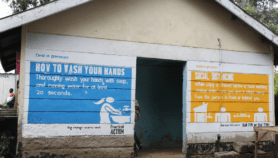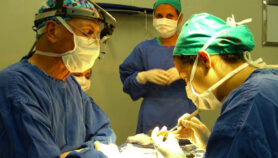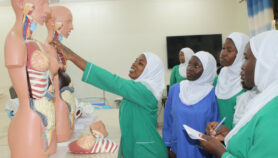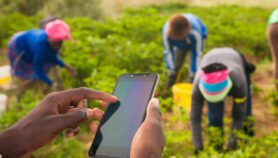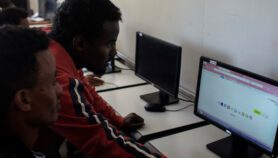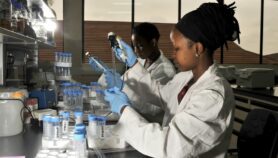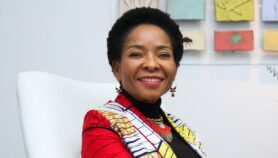Send to a friend
The details you provide on this page will not be used to send unsolicited email, and will not be sold to a 3rd party. See privacy policy.
2010 was a year of contrasts for those seeking to boost the role of science in the development agenda. Many new initiatives were launched; some took root, others ran into difficulties. And progress in meeting big challenges, such as conserving biodiversity and tackling climate change, remained slow.
Several organisations had chosen 2010 as the target date for achieving specific goals. Perhaps the most ambitious was the Convention on Biological Diversity (CBD), which aimed to "significantly curb" biodiversity loss by this date. But biodiversity campaigners fell spectacularly short of achieving this and discussed their failures this year, fearing that the public is oblivious to their messages. Some concluded that biodiversity must be linked more tightly to people’s fates.
The October meeting of signatories to the CBD, held in Nagoya, Japan, was more upbeat and led to agreements on several steps to stem the global decline of species and their habitats.
2010 was also a milestone for the Millennium Development Goals (MDGs), whose target date is 2015. At an international summit in New York in September, progress was generally considered to be patchy. Leading scientists told SciDev.Net what science has contributed to the goals so far.
Several reports found that poor countries are increasingly taking the initiative with innovations to help meet the MDGs, particularly with South–South collaborations.
North–South collaboration found a champion in US president Barack Obama, who sought to place science at the heart of diplomatic overtures to the Muslim world. But he was unable to follow up his stirring 2009 Cairo speech when domestic politics twice prevented him from visiting Indonesia.
However, there is now a bilateral science and technology (S&T) agreement between the Indonesia and United States, and the two presidents met at the G20 summit in June. An announcement of US$136 million in funds for S&T and the environment followed in July. Obama finally visited Indonesia in November, and he also extended science ties with India.
In November, Cathleen Campbell of the US Civilian Research Development Foundation talked to SciDev.Net about the value of science diplomacy. But there is still a difference of opinion about whether science diplomacy initiatives are likely to have a significant effect.
A scientific row broke out when UNESCO linked its name to that of the controversial president of Equatorial Guinea in the UNESCO-Obiang Nguema Mbasogo International Prize for Research in the Life Sciences. The row divided African and Western nations before being resolved by diplomatic manoeuvring in October.
Natural disasters cannot easily be prevented, but those who respond to them on the ground are often ignorant of much of the evidence that could help them. The launch of the Humanitarian Innovation Fund was intended to revolutionise disaster response by providing an evidence-based approach.
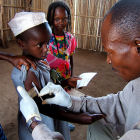
Money was holding back development of several vaccines
Flickr/Teseum
Impressive progress in developing vaccines against major diseases led to growing realisation that there is not enough money to roll them out. The Bill and Melinda Gates Foundation began the year by announcing a huge funding boost for vaccine development and deployment, but despite this, the roll-out of a cheap new meningitis vaccine is threatened; AIDS vaccine scientists say that financial support is waning just as they are making progress; and tuberculosis vaccines are languishing in laboratories in the developing world.
Crops have been bred to be more resilient to the effects of climate change — notably salinity, drought and floods — and to increase their micronutrient content, all without using genetic modification (GM). Yet acceptance of GM crops grew in parts of the developing world.
Some 12 countries in Africa now have national biosafety frameworks, and 11 others have interim versions, to allow the safe adoption of GM crops, although resistance is fierce in some places.
In India, GM eggplant, the first GM food crop to complete its trials, was given a two-year moratorium. Bangladesh and the Philippines are waiting for India’s final decision before they approve the crop.
Various GM organisms began to emerge in field trials, sometimes with little publicity, as SciDev.Net revealed after the controversial release of GM mosquitoes in a trial on the Cayman Islands. The goal is to eliminate diseases such as malaria and dengue, and participating countries include Malaysia, Mali and Mexico. But opponents are calling for better regulation.
Several reports reminded us of the enormous scale of the nutritional threat posed by climate change. But the year ended on a more optimistic note when a report edited by Calestous Juma, professor of the practice of international development at Harvard University, claimed that Africa could feed itself in a generation.
The Consultative Group on International Agricultural Research, which channels funds for agricultural research, underwent a revolution in 2010 aimed at becoming more effective and attractive to donors, from whom it hopes to raise US$1 billion to fund ‘mega-programmes’ on themes such as rice research.
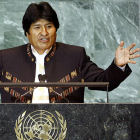


Latin America hosted two climate change summits in 2010: Cochabamba, Bolivia, in April, and Cancun, Mexico, in December
Prensa Cumbre Climática
Latin America and the Caribbean
Brazil continued to set the pace for South America’s science ambitions when 4,000 people gathered in May to brainstorm a ten-year state policy on sustainable S&T and innovation. The conclusions were submitted to a national public consultation in November and will steer the country’s science over the next decade.
The double tragedy of earthquakes in Haiti and Chile early in the year provided vast amounts of data for seismologists. In particular, a digital satellite image of the ground deformations caused by the Chilean earthquake had implications for the understanding of earthquakes everywhere.
Earthquake preparedness also received a boost, from a proposed marine fibre-optic system to a tsunami alert system using text messages for Chile. Furthermore, a quick way of identifying how vulnerable a building is to earthquakes could help poor countries design safer homes.
Fears about climate change were galvanised by the publication of reports warning that many countries are ill prepared for the consequences.
The region was twice the focus of climate campaigners — not only for the COP 16 climate change conference in Cancun, Mexico, in December, but also for the World People’s Conference on Climate Change in April in Bolivia. Bolivia sought a Justice Tribunal to monitor compliance to climate change agreements, but its attempts to stall what it saw as unsatisfactory agreements at COP 16 were largely unsuccessful.



African Union approved a feasibility study for the African Space Agency
Flickr/woodlerwonderworks_1
Sub-Saharan Africa
There were many breakthroughs in African science policy, especially at the national level. In East Africa, for example, both Uganda and Tanzania increased spending on S&T.
African countries rallied behind a South African bid to host the Square Kilometre Array radio telescope and backed plans for a continent-wide space agency.
At the continental level, collaboration on science between Africa and the European Union was underlined at a summit in late November, with plans for an intercontinental ministerial dialogue on science.
However, the election of a ‘dream team’, including African superpowers Egypt and South Africa, to the bureau of the African Ministerial Council of Science and Technology in March has so far failed to speed up the implementation of Africa’s science plans, including the so-called ‘lighthouse projects’ approved in 2008. A dispute over the locations of the five ‘nodes’ of the Pan-African University has also resulted in disappointment.
The potential of Africa’s love affair with the mobile phone to help with aid and development yielded a range of ingenious projects, ranging from insurance schemes for smallholder farmers to improved AIDS survival. But several studies concluded that their potential will only be achieved if the development of other infrastructure keeps pace.
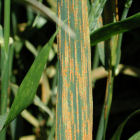


An epidemic caused by a new strain of wheat fungus could cause billions of dollars in crop losses across North Africa, the Middle East and Central Asia
USDA/Yue Jin
Middle East and North Africa
Countries in the Middle East and North Africa rushed to embrace renewable energy in 2010. Morocco launched a huge solar-thermal energy project and Saudi Arabia announced plans for a renewable-energy city.
As the region’s water availability decreases, people are forced to innovate, with Yemen’s capital’s Sana’a likely to become the first city to run out of water, by as early as 2025.
Climate change, together with emerging plant diseases, will also hit region’s crop production.
New North–South partnerships promised to boost research, Algeria pledged to increase its science funding, and Iran announced plans to promote science regionally. There were also initiatives to boost Islamic science, highlight bioethics in the Arab world, and empower women who work in technology.
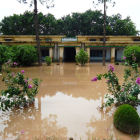


Huge floods in Pakistan displaced millions and devastated years of research efforts
A. A. Khan
South Asia
The devastating floods in Pakistan dominated much of South Asia’s news in 2010, with extreme weather events increasingly being attributed to climate change.
Data gathering and its deficiencies were in the spotlight. But gathering data turned out to be easier than communicating the information and putting it to use.
SciDev.Net highlighted the plight of Pakistan’s crop research in the aftermath of the floods and discussed how the country plans to move forward with a climate change strategy after the floods.
Elsewhere, India’s role in providing cheap HIV drugs to the developing world was quantified for the first time. But concerns about how a new free trade agreement with the EU might affect its generic drugs industry were highlighted and some possible solutions to intellectual property issues were suggested.
India’s growing scientific output was calculated and politicians called for more science funding. But the country’s technological capability has plummeted and many challenges remain for India’s science.
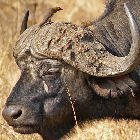


Scientists in Malaysia experimented with a self-spreading livestock vaccine
Flickr/kicki
South-East Asia
South-East Asia was ravaged by natural disasters in 2010, and warnings to the public of impending tsunamis, typhoons and heavy rains were often inadequate.
A report in January found that warnings from the Indian Ocean Tsunami Warning System in Indonesia and Thailand were not communicated well enough on the ground. It was a similar story on the remote Mentawai Islands in October, when 400 people died after receiving no warning of a tsunami.
Exciting scientific projects were happening throughout the region. For example, the Pacific islands got their own plant bank to >preserve region’s biodiversity. Institutions from Cambodia, Philippines and Vietnam joined forces with counterparts in other Asian countries to make their own HIV vaccine through the AIDS Vaccine Asia Network. And Malaysian scientists were testing a controversial, self-spreading cattle vaccine to curb bacterial disease in livestock.



Contaminated milk was blamed on pressure to innovate in China — yet new innovations also allowed quicker detection of contaminants
Flickr/Tambako the Jaguar
China
China continued to strengthen its scientific relations with other countries, such as Vietnam and many African countries, including Namibia. But its international scientific influence remains low.
The country’s science publishing industry faced a scandal over alleged fraudulent papers and revelations that one-third of country’s journals are never read by anyone. The pressure to publish has led to a five-fold increase in the scientific ‘paper trade’ in China.
Too much pressure, this time to innovate, was blamed for a 2008 scandal over tainted milk — which in turn lead to innovations in detecting food contaminants.
The country unveiled optimistic plans for science communication and held several outreach events to engage the public, notably about sustainable energy and GM crops. But there were calls for more thorough GM risk assessments after a study found that fields of Bt cotton had increased numbers of pests.



